Laura He
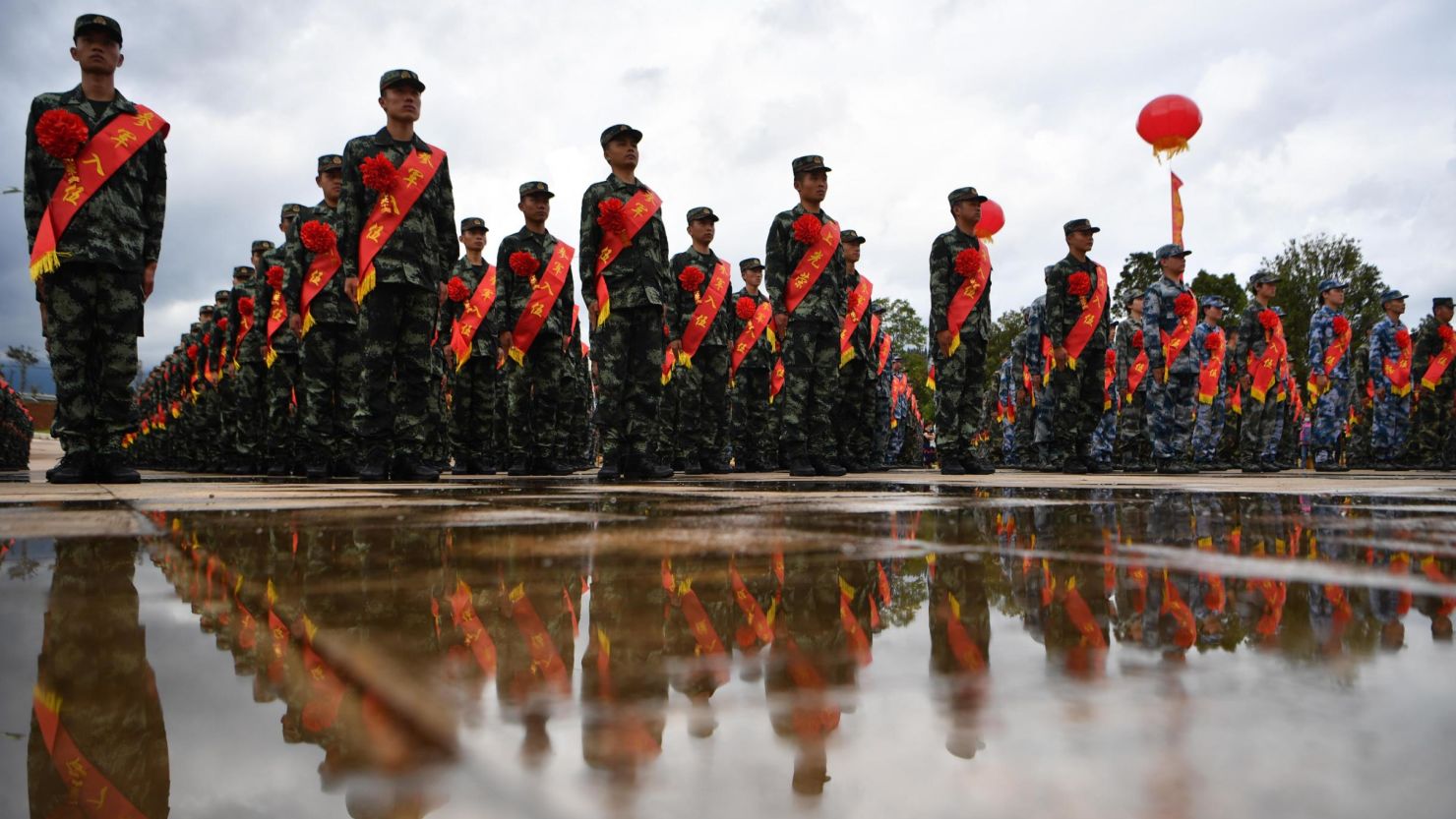
Chinese companies are doing something rarely seen since the 1970s: setting up their own volunteer armies. At least 16 major Chinese firms, including a privately-owned dairy giant, have established fighting forces over the past year, according to a CNN analysis of state media reports.
These units, known as the People’s Armed Forces Departments, are composed of civilians who retain their regular jobs. They act as a reserve and auxiliary force for China’s military, the world’s largest, and are available for missions ranging from responding to natural disasters and helping maintain “social order” to providing support during wartime.
The forces, which do not currently operate outside China, have more in common with America’s National Guard than its militia movement, which refers to private paramilitary organizations that usually have a right-wing political focus.
The establishment of corporate brigades highlights Beijing’s growing concerns about potential conflict abroad as well as social unrest at home as the economy stumbles, analysts say.
The revival is also seen as a response to the pandemic, and part of Chinese leader Xi Jinping’s efforts to tighten Communist Party control over society, including the corporate sector.
“The return of corporate militias reflects Xi’s rising focus on the need to better integrate economic development with national security as the country faces a more difficult future of slower growth and rising geopolitical competition,” said Neil Thomas, a fellow for Chinese politics at Asia Society Policy Institute’s Center for China Analysis.
“Corporate militias under military leadership could help the Communist Party more effectively quell incidents of social unrest such as consumer protests and employee strikes,” he said.
China’s economy grew 5.2% in 2023, slightly better than the official target that Beijing had set. But the country is facing a myriad of challenges, including a record property downturn, surging youth unemployment, deflationary pressure, rising corporate defaults and mounting financial stress at local governments.
Protests appear to be spreading as frustration grows. The number of labor strikes and demonstrations surged to 1,794 in 2023, more than doubling from 2022, when 830 cases were recorded, according to data from the China Labour Bulletin, a Hong Kong-based non-profit organization that monitors workers’ protests.
Just over a year ago, protesters clashed with police at the world’s biggest iPhone factory in Zhengzhou, as anger boiled over against Foxconn for reneging on promises to increase pay and benefits to attract workers back after the pandemic.
Outside the corporate sector, militia units are often organized by local governments and universities, according to rules on militia work. These units still exist in most of these places today, only on a much smaller scale than in previous decades.
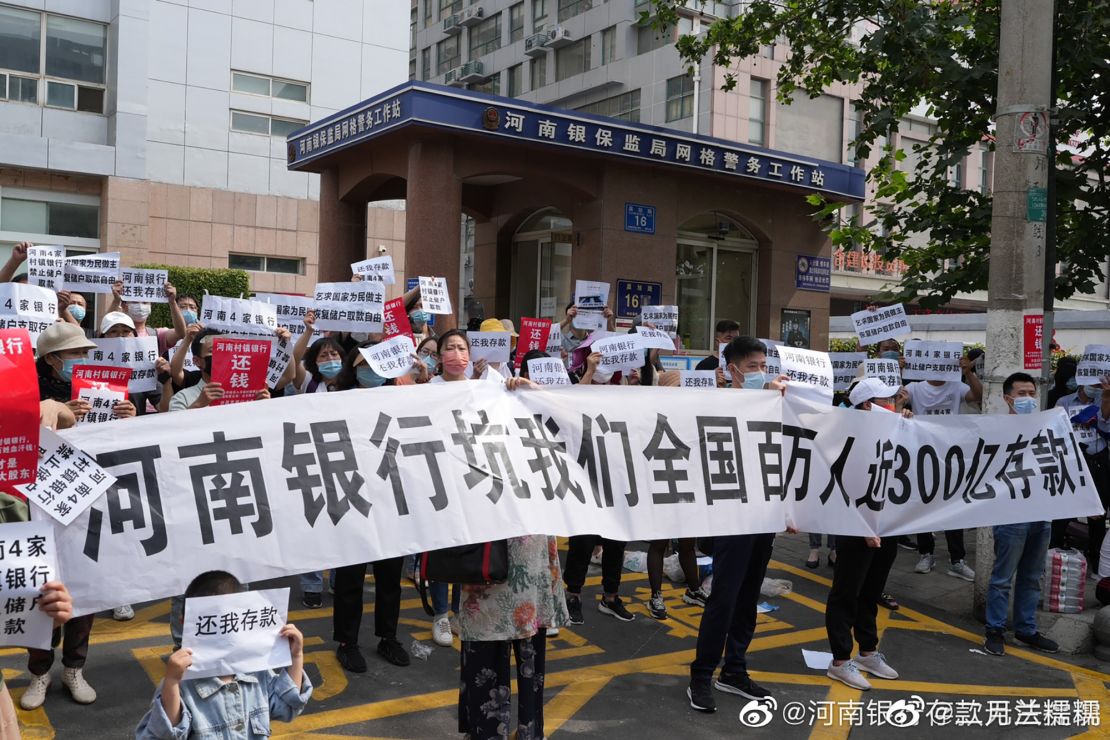
Depositors protest at the Henan branch of China's banking regulator in 2022 after their funds were frozen.
Variety of firms
Most of the companies that have so far announced militias have been state-owned enterprises (SOE), which are directly owned by central or regional governments.
But in December, Yili Group, the world’s fifth largest dairy producer, became the first major privately-controlled Chinese company in recent history to set up a People’s Armed Forces Department unit.
Yili is not majority controlled by the state, but the local government in Hohhot, the city where it is based, has an 8.5% stake, according its most recent exchange filings.
It did not provide any details about the strength of the force or the demographics of the employees who have joined up. According to China’s Military Service Law, male militia members should be 18 to 35 years old. There is some flexibility for people with special skills. Women are also eligible to join, though age requirements have not been specified in the law.
Yili’s unit will be under the direct management of the People’s Liberation Army (PLA) garrison in Inner Mongolia, the area where the company is based, and the regional government’s Communist Party committee.
The unit was formed to build a national defense force based at Yili, which can “serve in peacetime, cope with emergencies, and respond in wartime,” said Huang Zhiqiang, executive vice-chairman of the Inner Mongolia Autonomous Region, at a ceremony in the regional capital of Hohhot. A senior military official for the region and the city’s party secretary were also present.
It was latest in a slew of militias established by major Chinese companies in the past year.
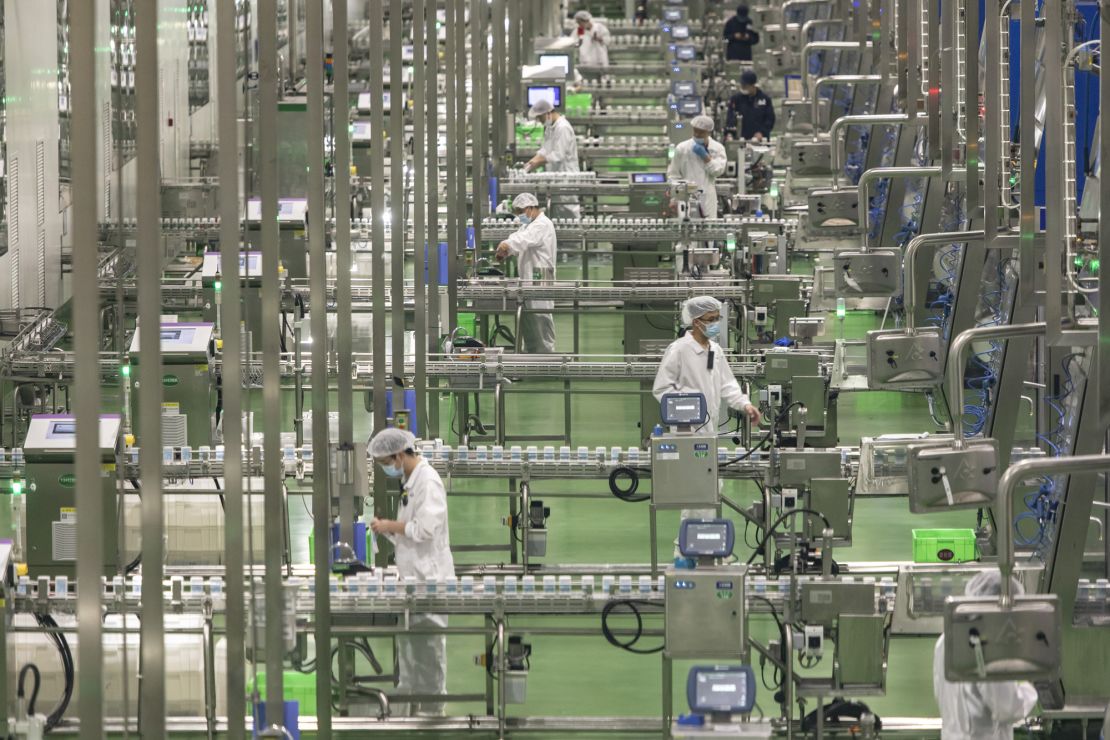
An Yili production line in Hohhot, Inner Mongolia, on May 29, 2023. Yili Group is China's biggest dairy producer.
In September, the Shanghai Municipal Investment Group, a government-owned property developer and construction firm, set up a People’s Armed Forces Department unit. It would be overseen by the Shanghai garrison of the PLA, according to Jiefang Daily, the official newspaper of the Communist Party in the city.
Liu Jie, the garrison’s commander, said the militia would assist the army in duties such as providing jobs to demobilized veterans or recruiting soldiers for the military.
At least 14 other state-owned firms have done the same last year, according to CNN’s analysis of state media reports.
They include Mengniu Dairy, China’s second-largest dairy producer; Hai’an Urban Construction Investment and Development in Nantong city, Jiangsu province; three property construction, transportation and water services companies in Huizhou city, Guangdong province as well as nine firms in Wuhan, the capital of Hubei province.
At a press conference in October, a spokesperson for the Defense Ministry said the push to set up militias at state-owned companies was to “strengthen national defense development.”
A long history
China’s militias predate the 1949 founding of the People’s Republic. In fact, they originated in the 1920s and supported the Communist Party in its numerous battles. After 1949, when the party took control of mainland China, the units were eventually embedded into governments, schools and companies.
The forces were prevalent during the Maoist era from 1949 to 1976 and peaked in the late 1950s — with 220 million members — when military tension was high with the United States over Taiwan, according to government documents.
Militias are a key part of China’s military, which is composed of two full-time professional forces: the PLA and the People’s Armed Police, which is tasked with internal security. Militias play a supporting role to the PLA, according to the country’s defense law.
By enrolling a large number of civilians into the brigades, Mao Zedong, China’s revolutionary leader, said he was enhancing the country’s defense against the threat of “imperial forces” such as the United States. But historians said Mao used the forces to promote his personal agenda and consolidate his power.
He embedded the brigades into the People’s Communes, huge collectives formalized in 1958 that managed almost all economic and political activities in rural China. The communes were a central part of Mao’s Great Leap Forward campaign, a disastrous effort to galvanize agriculture and raise steel production through collectivization that resulted in the deaths of tens of millions of people.
Mao also expanded the militia system to suppress and intimidate people who opposed his radical policies, while developing a cult of personality within and outside the party.
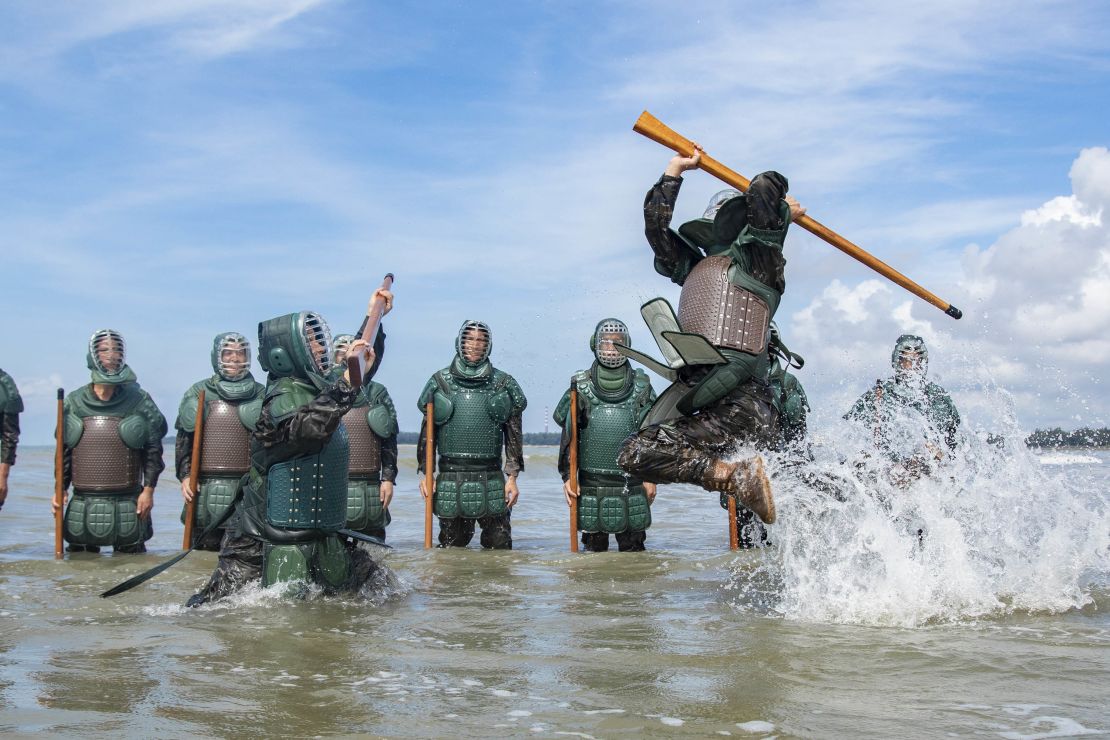
Armed police officers and soldiers training in seawater in Fangchenggang City, China's Guangxi autonomous region, on July 24, 2023
After Mao’s death in 1976, the country started shifting its focus to economic growth rather than political struggle. As the economy took off, membership of militias collapsed to 8 million by 2011, according to most recently available data from the national defense ministry.
Although some SOEs retained their militias, they hadn’t previously existed in major private enterprises until recently, as the private sector only started to re-establish itself after 1978, when China implemented free-market reforms.
Why now?
The resurgence of corporate militias is likely driven by the Covid-19 pandemic and the recent crisis in the real estate sector, according to Timothy Heath, senior international defense researcher at Rand Corporation.
“The Covid-19 pandemic could have played a role in motivating central leaders to seek more effective organizations and forces in society who could help manage and coordinate responses to major national emergencies such as pandemics,” he said.
A years-long property market slump has triggered a widespread mortgage strike. Since 2022, angry homebuyers in many Chinese cities have refused to pay their mortgages for unfinished apartments after cash-strapped developers delayed or abandoned construction.
The fallout from the real estate slump has spread to the financial sector, causing some major shadow banks to default on their investment products, which in turn has stirred demonstrations by people who lost money.
The re-establishment of the People’s Armed Forces Departments is also related to Xi’s larger effort to overhaul the Chinese military, Heath added. The Chinese leader has made no secret of his goal to “modernize” the PLA and transform it into a “world class” fighting force.
“The main purpose of the changes is to improve the military’s ability to carry out a defense mobilization of assets. This can, in the long run, save the PLA resources by delegating some duties to militia forces to care for,” Heath said.
Willy Lam, senior fellow of the Jamestown Foundation, points to a sense of déjà vu.
“We are seeing the revival of Mao’s key slogans — ‘the people’s warfare’ and ‘the organic co-existence of the civilian and military sectors,’” he said.
That might reflect Beijing’s desire to further tighten control over society and put the country on a war footing, just like Mao did in 1950s and 1960s.
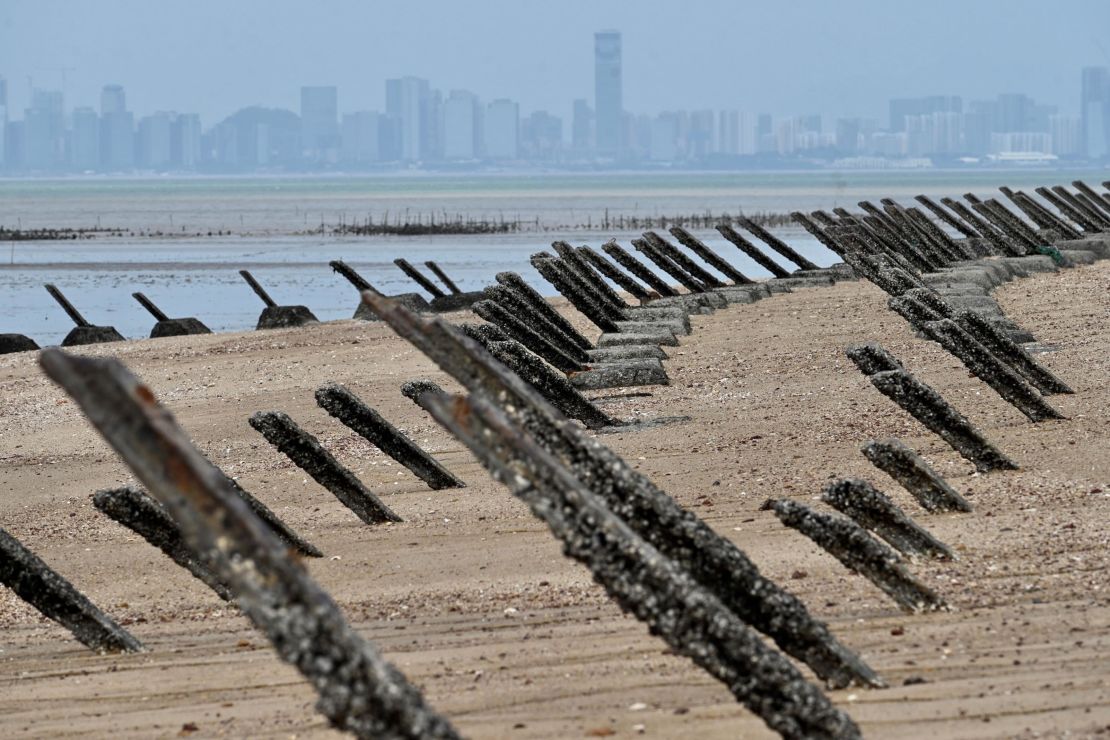
Anti-landing spikes placed along the coast of Taiwan's Kinmen islands, which lie just two miles from the Chinese coast (in background), as pictured on October 20, 2020
In the longer term, Xi might be preparing for an invasion of Taiwan, when “much of China will become militarized,” Lam said, adding that big cities could be turned into “militarized zones” or “ports.”
Xi has vowed that the island’s eventual “reunification” with the mainland is “a historical inevitability.” China’s ruling Communist Party views Taiwan as part of its territory, despite having never controlled it.
“If more and more citizens become members of their militia, their nationalistic fervor will supposedly be raised,” Lam said.
No comments:
Post a Comment